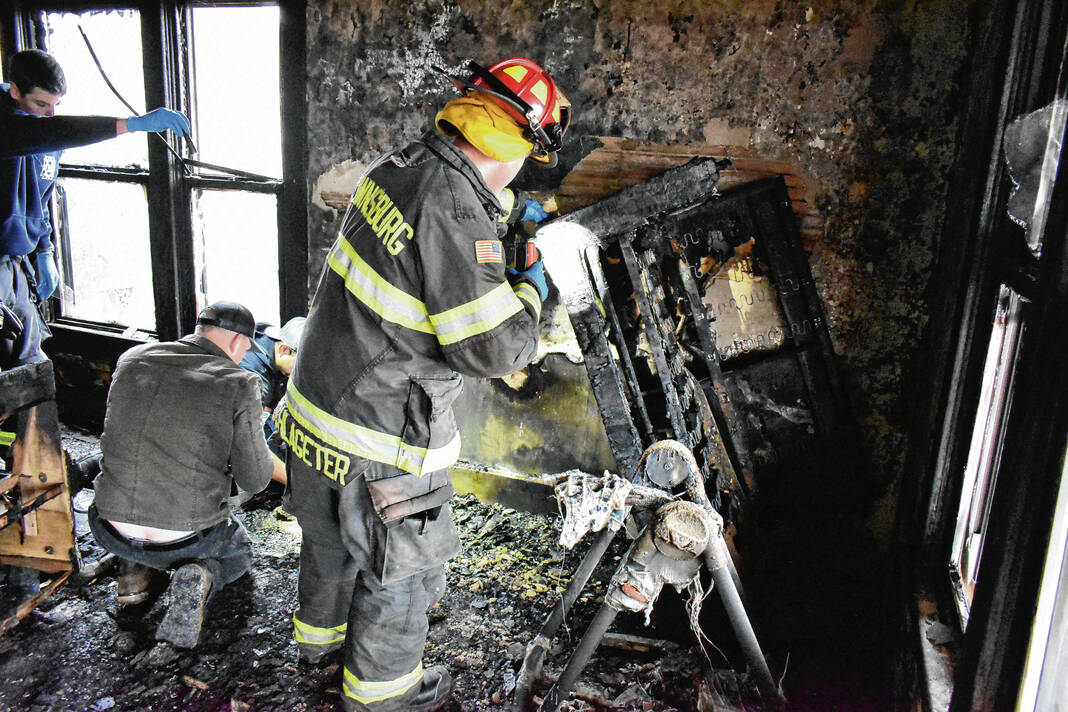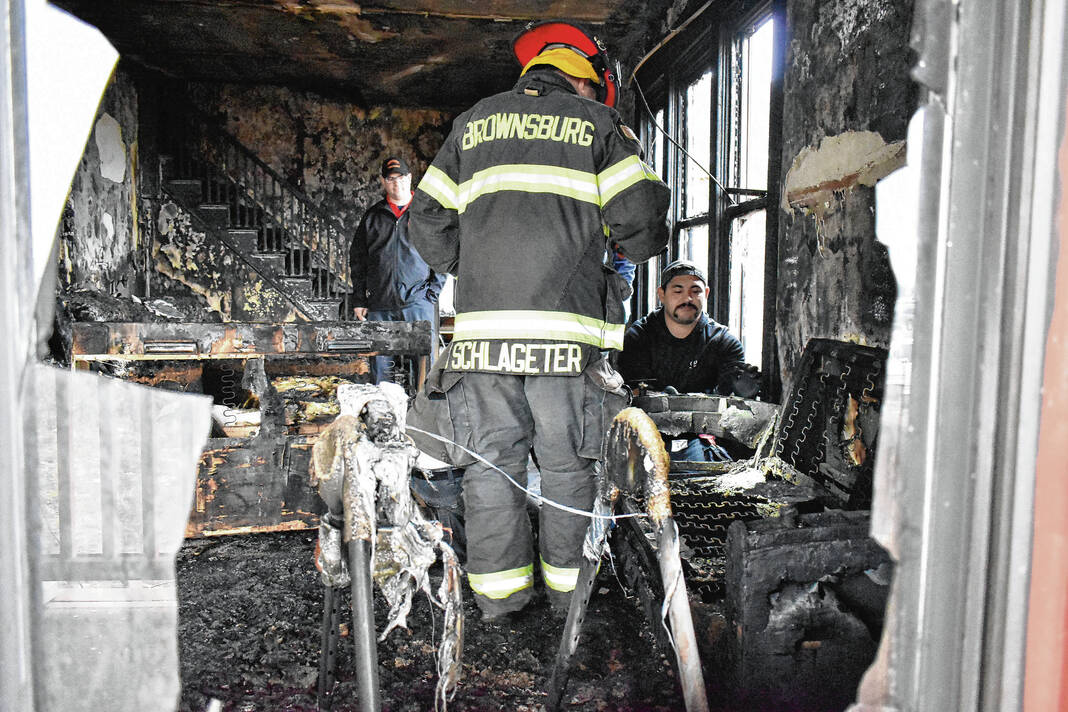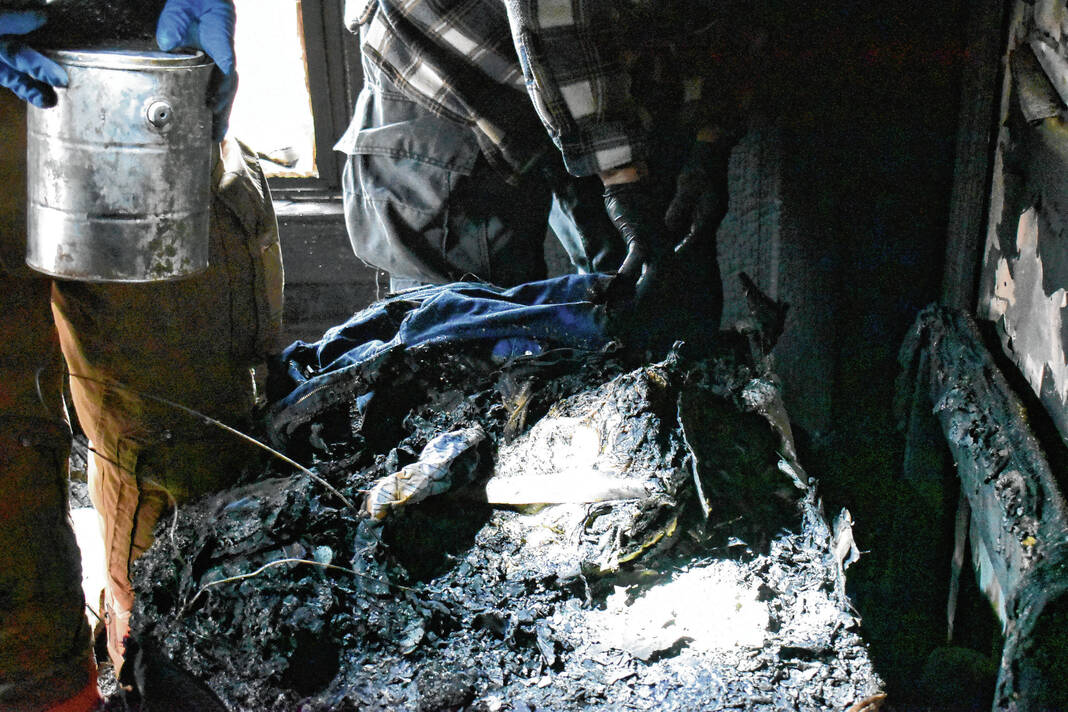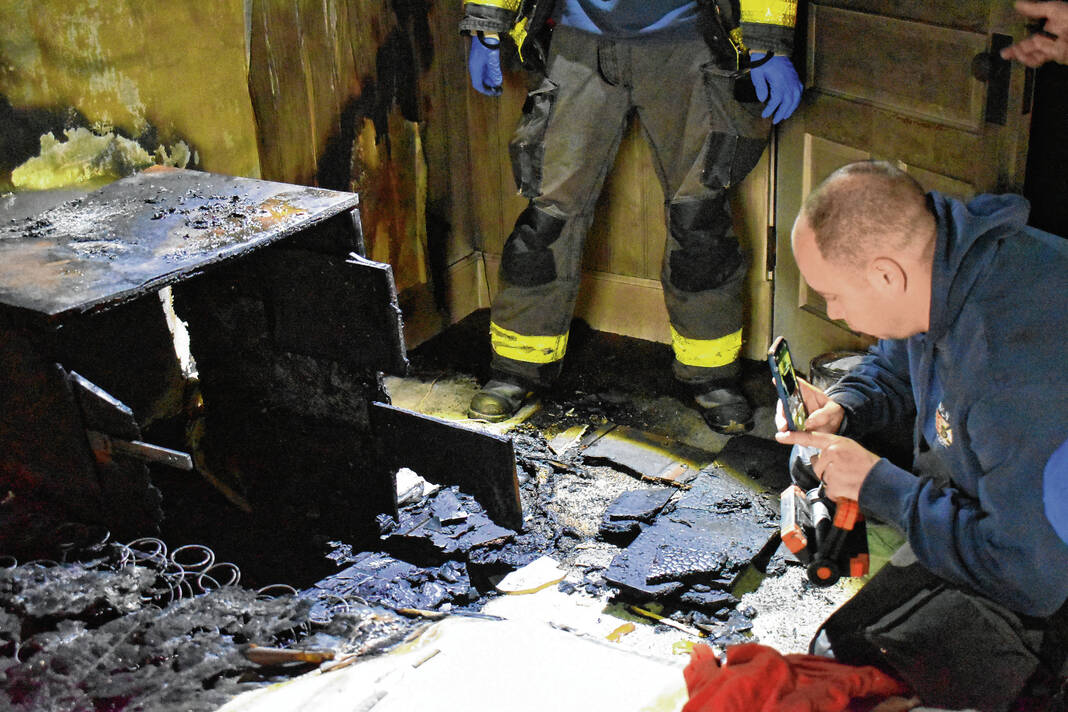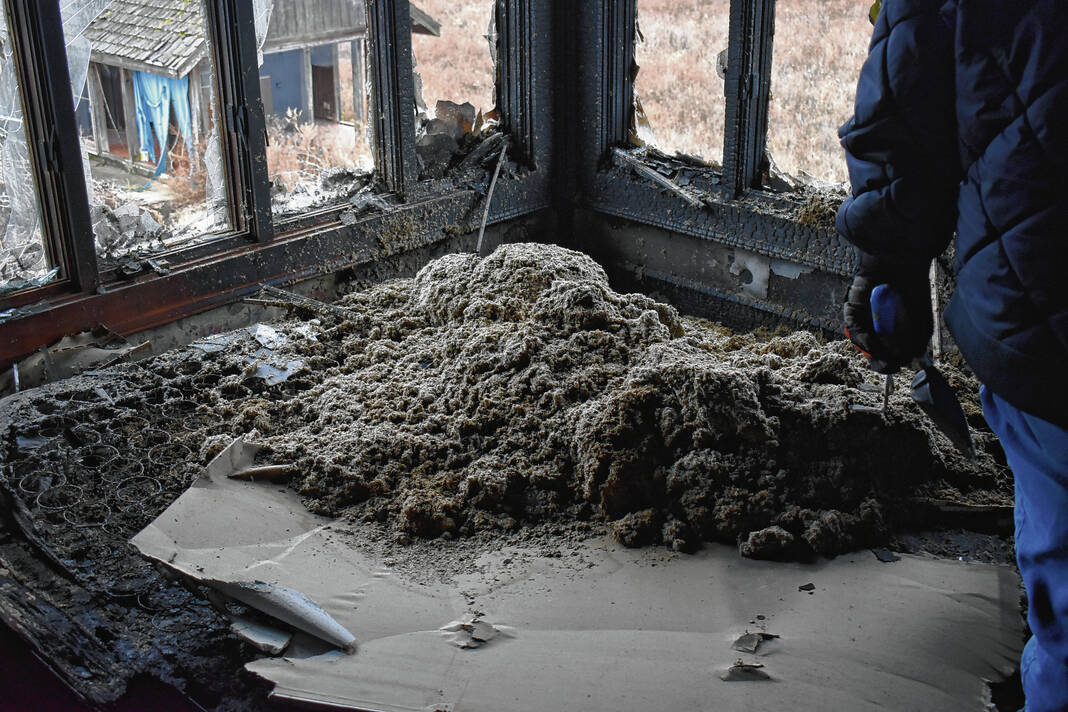From the outside, the vacant Whiteland home looked a little run down.
Inside, the walls and ceilings were charred black from smoke and fire damage. Windows were shattered, and boots crunched on the broken glass and debris as first responders walked through the home.
TVs were melted, couches and mattresses were burned down to their metal springs and a wooden end table was half-burned. Parts of the ceiling and insulation had fallen due to the fire.
First responders had one job to do at the home on Monday morning: take all of the knowledge they had learned as part of a five-day training course and apply it to a mock fire investigation.
Indiana firefighters from as far north as Peru and as far south as Columbus came to a two-story vacant home located southwest of the Whiteland Road and Interstate 65 interchange as part of a fire investigator training by ELITE Public Safety Consulting, a nonprofit consulting group that specializes in trainings for public safety officials.
The training was sponsored by the Bargersville Community Fire Department and the Johnson County Sheriff’s Office. The Whiteland Fire Department provided the house, which was offered to them for training by a construction company that was preparing to tear it down to make way for a development, officials said.
Twenty-one public safety officials from 17 agencies took part in the fire investigation training. Local agencies taking part in the training include Bargersville, Whiteland, the sheriff’s office, and fire departments in Franklin, Greenwood and White River Township. The Indianapolis Metropolitan Police Department also took part.
This part of the training course is five days, with the first four days being eight-hour classroom sessions. During the sessions, instructors teach students everything they need to know, from start to finish, about how to investigate fires, said Dr. Candace Ashby, president of ELITE Public Safety Consulting.
During the first few days of the course, students learn about fire patterns and laws relating to fire investigations, such as interviews, search warrants and consent. Later, students learn about electricity, explosions, documentation of scenes and processing evidence, said Dr. Mark Culver, one of the training instructors.
The last day, Day 5, is when students go out into a controlled setting to test their knowledge and skills. This was what was taking place on Monday.
“This is the funnest day of all, where they actually get to come out and take everything that they’ve learned and they can do hands-on skills,” Ashby said. “They get to put it into play, everything that they learned.”
When the investigators come out to do investigations, they follow the scientific method. As part of the training, instructors can show students how to process a scene from beginning to end the correct way so that they don’t destroy evidence by mistake, she said.
“If they go in, and they’re not careful in photographing or the procedures or processes that they take, then they could actually not be able to find the cause,” she said. “… This takes him through a rundown of seven different areas in which they go through how to process this scene from beginning to end.”
Once the teams of students completed their work at the mock scene, they went back to the Johnson County Sheriff’s Office to put together a presentation on how the fire started. The presentations include slides of their photos and drawings they took at the scene.
“Everything we taught them, they present it, tell us what caused it and so forth,” Culver said.
After this, the students will take an exam to get state-certified for fire investigations.
“If (they’re) successful at that, then they’ll be state of Indiana-certified fire investigators,” Ashby said.
This training class was unique because typically ELITE doesn’t have an actual house to use for the training. They typically set up individual pods to burn before teams of students go in to investigate, she said.
“Every once in a while they’ll throw us a house,” Ashby said. “And then we go in and burn those, but typically it’s a very controlled burn that we have to do to stage these.”
Being a fire investigator is more scientific today than in years past, which is why investigators need to take classes like this. Monday’s class was just the basic class for students to get certified, and there are certifications from other organizations they can earn to build up their qualifications, Culver said.
“This is like the beginning of their journey as a fire investigator,” he said.
Classes like this are critically important to keeping the public safe, Ashby said.
“Every fire department … the mission statement is ‘How do we prevent fire from occurring so that we can keep the public safe?’” she said. “The only way to know how to prevent it from occurring is to understand how it started to begin with.”


